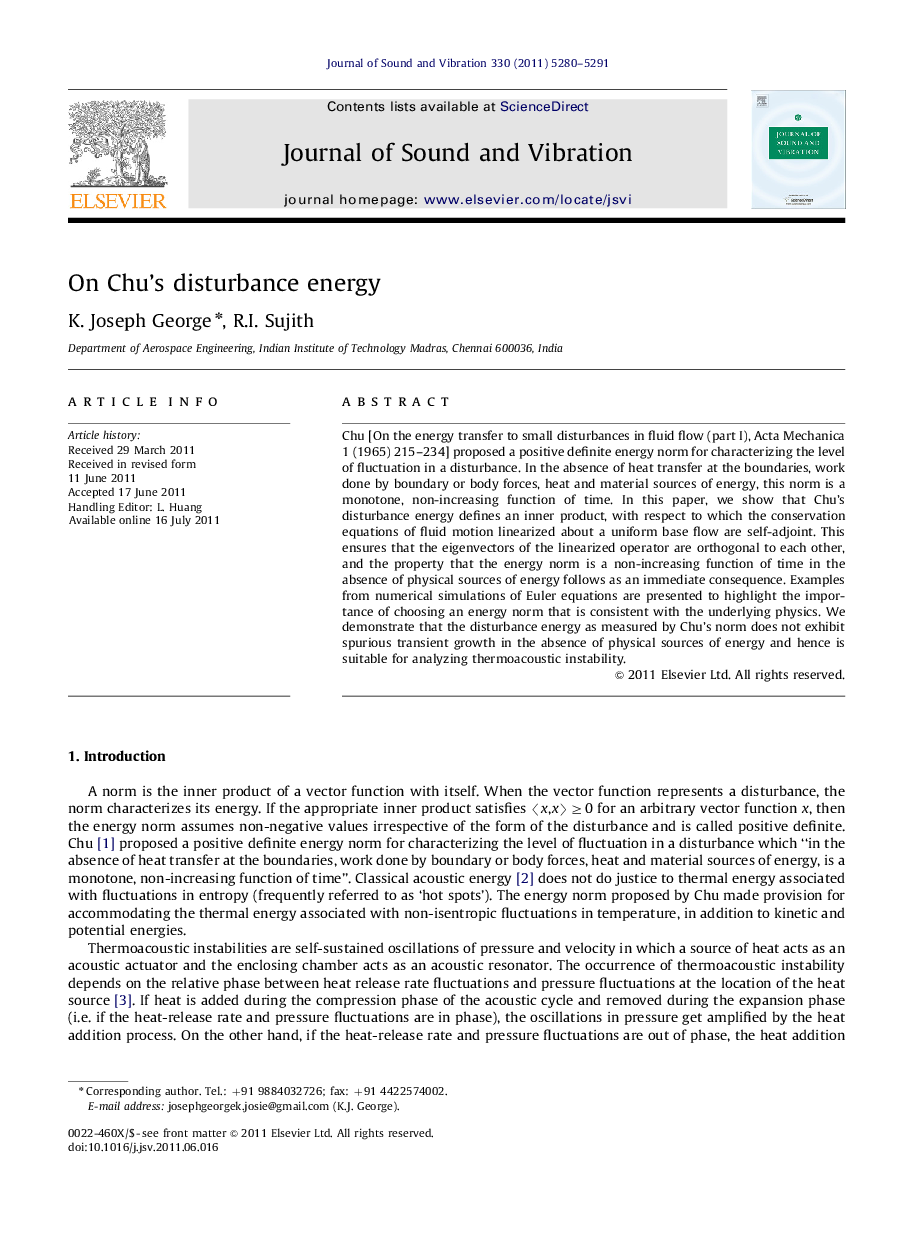| Article ID | Journal | Published Year | Pages | File Type |
|---|---|---|---|---|
| 288644 | Journal of Sound and Vibration | 2011 | 12 Pages |
Chu [On the energy transfer to small disturbances in fluid flow (part I), Acta Mechanica 1 (1965) 215–234] proposed a positive definite energy norm for characterizing the level of fluctuation in a disturbance. In the absence of heat transfer at the boundaries, work done by boundary or body forces, heat and material sources of energy, this norm is a monotone, non-increasing function of time. In this paper, we show that Chu's disturbance energy defines an inner product, with respect to which the conservation equations of fluid motion linearized about a uniform base flow are self-adjoint. This ensures that the eigenvectors of the linearized operator are orthogonal to each other, and the property that the energy norm is a non-increasing function of time in the absence of physical sources of energy follows as an immediate consequence. Examples from numerical simulations of Euler equations are presented to highlight the importance of choosing an energy norm that is consistent with the underlying physics. We demonstrate that the disturbance energy as measured by Chu's norm does not exhibit spurious transient growth in the absence of physical sources of energy and hence is suitable for analyzing thermoacoustic instability.
► Formulated a strategy for developing mathematically consistent energy norms. ► Evaluated the merits and demerits of existing energy norms. ► Demonstrated the superiority of Chu's energy norm over several other norms. ► Proved that Chu's norm does not support unphysical disturbance energy growth.
